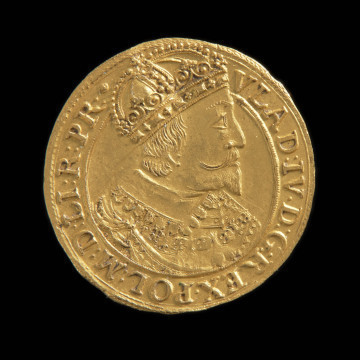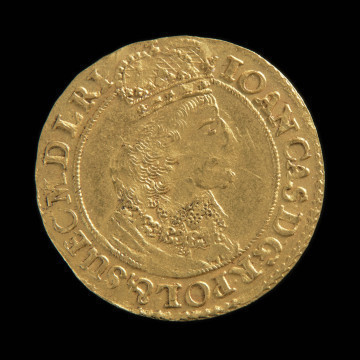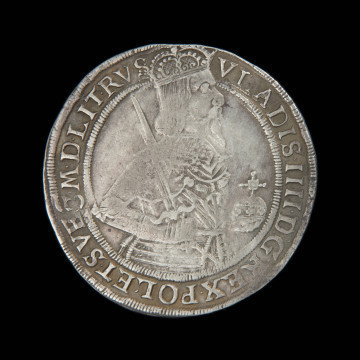
Ducat
1633
National Museum in Szczecin
Part of the collection: Polish coins
In 1454, King Casimir IV Jagiellon (1427–1492), while incorporating Gdańsk into Poland, also granted it a minting privilege. As a royal city, Gdańsk had to place the portrait of its ruler on the obverse of its coins. Thus, the image of Stefan Báthory (1533–1586) also appeared, although the city, supporting the Habsburg party, initially did not want to recognise the “Hungarian” as the king of Poland. The inscription on the obverse of the presented ducat requires comment. The ruler is titled as King of Poland and Duke of Prussia. The question of Lithuanian rule, which was usually emphasised in the titles of Polish rulers, was completely ignored. This was because Stefan Báthory in a way violated the provisions of the Treaty of Krakow of 1525, on the basis of which Prussia was not incorporated, as demanded by some Polish diplomats, but a fief Duchy of Prussia was established instead. The former Grand Master of the Teutonic Order, Albrecht Hohenzollern (1490–1568) became a secular Duke in Prussia and a fief of Poland. After the end of his family line, Prussia was to be incorporated into the Republic of Poland. In 1577, Stefan Báthory, needing money for the war with Russia, agreed to let Georg Friedrich, Margrave von Ansbach (1539–1603) take over caring for his mentally ill cousin, Albrecht Frederick Hohenzollern, Duke of Prussia (1553–1618). In return for 200,000 guilders, the Margrave von Ansbach became the de facto ruler in Prussia, and in the following year he paid tribute to Stefan Báthory. The title of Duke of Prussia was thus to secure the rights of King Stefan and his successors to sovereignty over this territory. The heirs of Margrave Georg Friedrich von Ansbach successively increased the independence of the Duchy of Prussia from Polish kings. In 1618, with the consent of Sigismund III Vasa (1566–1632), the Duchy of Prussia found itself in a personal union with the Electorate of Brandenburg, and in 1657, during the reign of John II Casimir (1609–1672), it completely broke away from the Kingdom of Poland.
Mieszko Pawłowski
Other names
Dukat
Author / creator
Dimensions
cały obiekt:
Object type
coin
Technique
minting
Material
gold
Creation time / dating
Creation / finding place
Owner
National Museum in Szczecin
Identification number
Location / status

1633
National Museum in Szczecin

1650
National Museum in Szczecin

1657
National Museum in Szczecin
DISCOVER this TOPIC
Museum of King Jan III's Palace at Wilanów
DISCOVER this PATH
Educational path